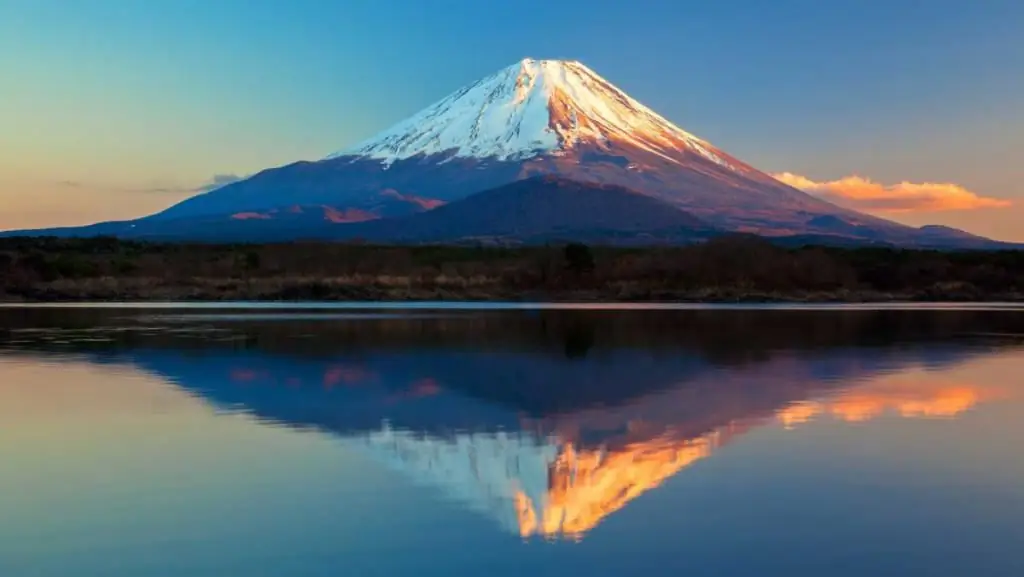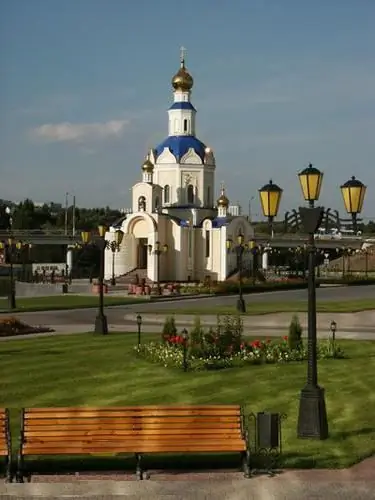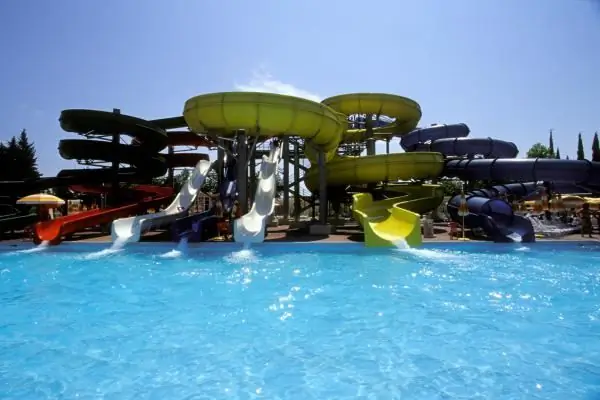- Author Harold Hamphrey [email protected].
- Public 2023-12-17 10:06.
- Last modified 2025-01-24 11:10.
The middle course of the blue Danube, full-flowing and calm, on both banks of which the capital of Hungary is spread, fills it with special poetry. Wonderful views open from the magnificent embankments: the Buda Hills, on which two ancient districts, Buda and Obuda, are located and almost merge, and the plain with modern Pest.
City in the center of Europe
The beautiful capital of Hungary - the pearl of the country - is located between the Alps and the spurs of the Carpathians, in their lowlands. The nomadic tribe of Hungarians, whose language belongs to the Finno-Ugric group and is very different from all other European languages, came to these lands from the Urals or even from Western Siberia about ten centuries ago. But already three hundred years later, during the reign of King Stephen, all the pagans were baptized, and the king took the name Stephen. The invasion of the Mongol-Tatars destroyed the city of Buda. It was restored and became known as Obuda, which means Old Buda.

The new royal palace was moved to the Fortress Hill and surrounded by walls. On the other side of the Danube settledmerchants and artisans in the town of Pest. In 1873, these towns merged into Budapest. In a single harmonious, surprisingly attractive, majestic whole. The architectural ensemble of the capital of Hungary took shape during the XIV-XX centuries. All architectural styles can be found here, from the early Romanesque to the Baroque. This causes admiration and pride for the beauty of Budapest among the Hungarian people and all tourists who come here to admire the ancient monuments and modern buildings, the openwork bridges over the Danube, the amazing Vajdahunyad fortress, the beautiful Parliament building and many sights that are found at every turn. Budapest is a huge city, so it is more convenient to travel in it by transport, including the metro. An interesting fact: the first metro line in Europe was laid exactly in Budapest under the luxurious Andrássy Avenue, which is compared to the Champs Elysees.
Let's take a quick walk along Andrássy Avenue
The main artery of the capital connects two squares: Erzhebet and Geroev. The latter was built in honor of the millennium of the formation of the state. In Budapest, the capital of Hungary (pictured) in the center of the Heroes' Square is the tomb of the Unknown Soldier.

It is surrounded by a colonnade in the Empire style. Allegorical sculptures will also be found here: Peace and War, as well as Welfare, Labor, Valor, Knowledge. On both sides of the street there are buildings in neo-renaissance, modern, neo-gothic, classic styles. Among them stands out the Opera House, which was erected in 1884. One of the initiators of itbuildings was Franz Liszt. And although the names of Liszt and Kalman are inextricably linked with Hungary, both composers were cosmopolitans who spoke German and French better than their native. But the incendiary Hungarian melodies that can be heard at the Opera House became the soul of their music. No wonder there is Franz Liszt Square and his house-museum on the avenue. In addition, we will pass, or better, we will pass, and the guide will show the house-museum of the composer Zoltan Kodai, the Museum of Terror, which is dedicated to the victims of two totalitarian regimes, the Drexler Palace, the Puppet Theater. The avenue was under construction for three years and is now under the protection of UNESCO.
Walk along the embankment
A leisurely passage along the banks of the Danube will make you exclaim: “What a city!” The capital of Hungary amazes with the scale and splendor of the Parliament building - the largest building in Budapest.

It was placed on the right bank of the Danube and decorated with arches, towers, spiers, spans. This huge Neo-Gothic building brings to mind the luxurious palaces of the emperors. There are 691 rooms in it, among which the royal crown and mace of St. Stephen and the silver-plated saber of one of the monarchs of the Renaissance found their place. Everyone who visits it will certainly inspect the main staircase, the domed hall and the Upper Chamber.
On the embankments you can find a tragic monument to the Jews shot and drowned by the Nazis: children's, women's and men's shoes left after them cast in metal.
On the embankment, the statue of a little girl inin carnival costume, Gresham Palace and Vigado Concert Hall. It was built ten years later on the site of another concert hall that burned down in a fire in 1848.
The Panorama of the Danube in Pest is also under the protection of UNESCO.
Bridges over the river
The capital of Hungary, the city of Budapest, divided by the majestic Danube into two parts, connects them with seven bridges. You can't see them all if you just walk. The most convenient way to see the Chain Bridge with lions, Margaret, Erzhebet, the Freedom Bridge and others, if you board the boat and enjoy all the opening landscapes and islands that you meet along the way. So, you can come to a very interesting place outside the capital - the Visegrad Fortress, where, according to legend, Count Dracula was imprisoned for 12 years.
Buda
On the other side of the river on a hill stands the Royal Palace and the Buda Castle. The palace was built seven hundred years ago under King Bel IV to defend himself against the Tatar-Mongolian nomads. It was surrounded by a fortress wall, within which the settlement of Buda quickly grew. By the 15th century, the strict ascetic fortress was expanded and became the largest in Europe. Constant defensive wars led her into decline. Only under the Habsburgs in the 18th century it was turned into a beautiful palace, which is admired by guests and residents of the Hungarian capital. The photo shows its panoramic view from above.

The palace was rebuilt after the fires of the 2nd World War. Here are the House of Hungarian Wines, the Museum of the History of Budapest, the National Library, the Fisherman's Bastion, the CathedralMatthias with a Gothic tower. It is the last two objects that are most often photographed by tourists.
Mount Gellert
It is high, and the rise to it is carried out by funicular. An unforgettable view of Budapest, the capital of Hungary, opens up from above. The mountain is covered with vegetation. In its shady well-kept parks, locals love to relax. And tourists run to take pictures of the Freedom Monument - a woman with a palm branch in her hand, a church in honor of Bishop Gellert and a monument to King Stephen with a horse. And below you can find a waterfall.
Basilica of St. Istvana
This is the largest and most beautiful religious building in the capital, which began to be built in 1851. It took 54 years to complete the construction. The basilica was consecrated in honor of the first king of the Magyars, St. Istvan, in the baptism of Stephen. The height of the cathedral - 96 meters - can only be compared with the height of the Parliament.

An elevator takes you to the observation deck. The cathedral complex includes two bell towers. One of them has a bell that weighs 9 tons! Inside the temple is beautiful and causes amazement and admiration. It is decorated with mosaics, marble chips, paintings and stained-glass windows. Statue of St. Istvana is installed in the altar. In the gilded shrine - the main shrine of the basilica - they keep the right hand of the king. Once a year, it is solemnly carried through the streets.
Szechenyi Baths
It is also amazing that the capital of Hungary is a resort. From underground, from a depth of more than one km, hot healing water flows into outdoor pools. In the "large" pool, it has t 27 ° C, and in the "hot" -38°C.

In total, there are three saunas and eleven pools open all year round. The bath is located in the cozy park Varoshliget, laid out in the English free style. It also houses a zoo, a circus, a statue of Anonymous, to which students come to touch the pen and get good luck, and one more of the many attractions. It will be discussed below.
Vajdahunyad Castle

In honor of the millennium of the country, this architectural complex was built of wood, which consists of 21 single buildings. Popular love for him led to the fact that he was rebuilt using stone. Here you can walk for a long time and look at copies of buildings from various places in the country. Different epochs, architectural styles, cultural heritages were skilfully and lovingly connected by builders in the open air. The castle is surrounded by a park that has a circus, a zoo and an amusement park.
We told about the main sights of the capital. But in order to cover in detail all the interesting things that are available in Budapest, a more extensive article is needed, and even better - a trip to this beautiful city.






